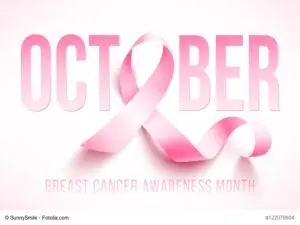
Important Breast Cancer Stats for 2016
Most people in the United States know a friend or family member who has been impacted by breast cancer. The following stats show how much of a widespread issue it is:
- One in eight women will develop breast cancer in their lifetime.
- 246,000 new cases of invasive breast cancer will be diagnosed this year.
- As of this year, there are more than 2.8 million women who have had, or are being treated for, breast cancer.
5 Year Survival Rates Based on Stage
The survival rate of those who have been diagnosed with breast cancer depends greatly on which stage of cancer they have.
Localized. If the cancer cells have not spread outside of the breast tissue, 99% of women live five years or longer.
Regionalized. If the cancer cells have spread to nearby tissue, 84% of women live five years or longer.
Distant (Metastasis). If the cancer cells have spread to other parts of the body, 26% of women live five years or longer.
Breast Cancer Must Be Detected Early
Be proactive in monitoring changes in your body and scheduling regular exams! You are much more likely to detect breast cancer in its early stages if you:
Perform Self Breast Exams
By performing a self breast exam once a month, you’ll be able to notice any new growths or changes in your breast tissue. If you feel any changes, make an appointment with your doctor.
Learn the proper way to perform a self breast exam.
Schedule Regular Mammograms
Mammograms are diagnostic x-rays of the breast tissue that help doctors see any growths or abnormal tissue in the breast. In most cases, women who are 50 to 74 years old should have a mammogram performed every two years. Women under 50 may need regular mammograms if they fit certain criteria.
Test for BRCA Gene Mutations
Researchers have discovered two genes, BRCA1 and BRCA2, that are linked to breast cancer. If a mutation is found in either of these genes, that person’s risk of developing breast cancer is greatly increased. Testing for these mutations is only recommended if:
- You have a family member with a BRCA1/2 gene mutation.
- You have a family member who developed breast cancer at 50 or younger.
- You have a family history of ovarian cancer
- You have a family history of male breast cancer
Learn more about the BRCA1/2 gene mutation
How to Decrease Your Risk
While you can’t change genetic factors, there are lifestyle changes you can make to lower your risk:
Limit Alcohol Intake. Even small amounts of alcohol increase your risk of developing breast cancer. It is recommended that you drink no more than one alcoholic beverage per day.
Stop Smoking. Cigarettes contain several cancer-causing toxins. In addition to lowering your risk of breast cancer, it is one of the best things you can do improve your overall health.
Lose Weight & Get Active . Obesity increases your risk of developing breast cancer and other diseases. Make an effort to maintain a healthy weight and get at least 150 minutes of moderate aerobic activity each week.
Schedule Your Annual Exam
Your annual exam is your best tool to maintain your health. At Associates in Womens Health, we provide comprehensive examinations and assess your risk for breast cancer and other potential health issues. To make an appointment, please call (402) 697-7200.
Sources:
http://www.breastcancer.org/symptoms/understand_bc/statistics
http://ww5.komen.org/BreastCancer/ChancesForSurvivalBasedOnCancerStage.html
http://www.mayoclinic.org/healthy-lifestyle/womens-health/in-depth/breast-cancer-prevention/art-20044676

